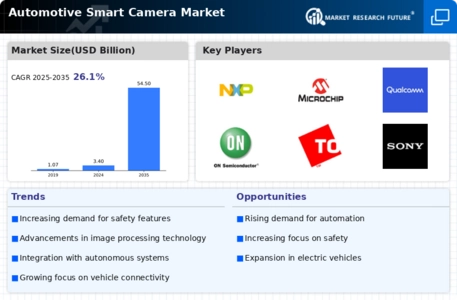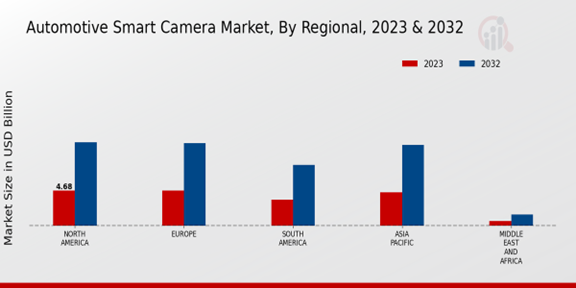Major players in the Automotive Smart Camera Market are continuously involved in research and development activities to enhance their product portfolio and gain a competitive edge in the market. These players are also focusing on strategic partnerships and collaborations to expand their market reach and strengthen their position in the industry. For instance, in 2023, Continental AG, a leading automotive technology company, partnered with Ambarella, a leading provider of AI vision solutions, to develop and produce high-performance automotive smart cameras for ADAS and autonomous driving applications.
This partnership is expected to accelerate the development and adoption of advanced smart camera systems in the automotive industry.
Leading Automotive Smart Camera Market players are also investing heavily in technological advancements to meet the evolving needs of the market. They are incorporating advanced features such as object detection, lane departure warning, automatic emergency braking, and night vision into their smart camera systems. These features enhance the safety and convenience of vehicles, which is driving demand for automotive smart cameras.
Additionally, the increasing popularity of autonomous driving is fueling the growth of the automotive smart camera market. As autonomous vehicles require a comprehensive suite of sensors and cameras to navigate and operate safely, the demand for automotive smart cameras is expected to surge in the coming years. Automotive Smart Camera Market development is being driven by several factors, including the increasing demand for ADAS and autonomous driving systems, the growing popularity of electric vehicles, and the rising safety concerns among consumers.
ADAS and autonomous driving systems require a range of cameras to provide a 360-degree view of the vehicle's surroundings, which is essential for safe and reliable operation. Electric vehicles also rely on smart cameras for features such as lane departure warning, blind-spot monitoring, and rear cross-traffic alert, which help to improve safety and reduce the risk of accidents. Furthermore, the growing safety concerns among consumers are leading to increased demand for vehicles equipped with advanced safety features, including automotive smart cameras.


















